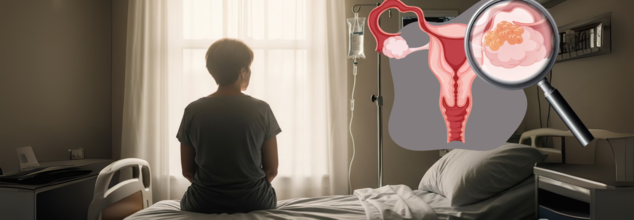- Health Conditions A-Z
- Health & Wellness
- Nutrition
- Fitness
- Health News
- Ayurveda
- Videos
- Medicine A-Z
- Parenting
- Web Stories
Dementia Risk Has Been Associated With These 15 Lifestyle And Health Risks

Dementia, as a subject, has been researched and explored for many years. Dementia is an umbrella term used to define mental health conditions that cause memory loss, changes in behavior patterns as well as affecting our ability to think. While there is still no cure for dementia, treatment for it involves dealing with the symptoms as well as early intervention. Psychologists and mental health experts have done many studies and found different lifestyle and health factors that can increase or decrease the chances of dementia.
Research suggests that many lifestyle choices can increase your chances of developing dementia before age 65, a condition often called young-onset or early-onset dementia.
A study published in JAMA Neurology pointed to 15 key risk factors, many of which can be changed or prevented. Others, like having a lower income or inheriting specific genes (APOE4), are much harder or impossible to change.
The study looked at health information from over 350,000 people under 65 in the UK Biobank database. By examining everything from genes to environmental influences, researchers were able to identify factors that raise the risk of early dementia.
Experts say that these risk factors can harm the brain by causing inflammation and creating harmful chemicals. They also mess with how the brain uses sugar for energy, which is key for brain cells to work right. It's believed that dementia, especially Alzheimer's, happens when the brain can't use energy properly.
Key Risk Factors for Early-Onset Dementia
Out of many factors studied, researchers found 15 main ones that greatly increase the risk of early-onset dementia:
- Less schooling
- Lower income or social standing
- Having two copies of a specific gene (called APOE4)
- Alcohol use disorder
- Feeling alone (social isolation)
- Lack of Vitamin D
- High levels of inflammation in the body
- Weaker handgrip strength
- Not drinking alcohol (this was also listed, suggesting other health reasons might be at play here)
- Hearing loss
- Diabetes
- Heart disease
- Depression
- Blood pressure drops when standing up (orthostatic hypotension)
- Stroke
Connection Between the Risk Factors
Researchers note that the same health issues affecting the brains of younger people are also linked to dementia in older people. This might be because we're seeing more young people develop problems like diabetes, which really harm the brain, making early dementia more common. These risk factors are also connected to each other.
For example, someone with alcohol use disorder might also have poor eating habits, vitamin shortages, weak muscles, and depression. They could also have other health problems like high blood pressure, diabetes, heart disease, and a higher chance of stroke. These problems can create a cycle: depression might lead to feeling isolated, which could then lead to drinking more as a way to cope, and this can ultimately cause long-term health issues.
Steps to Lower Your Risk for Early-Onset Dementia
Health organizations suggest that almost 40% of all dementias like Alzheimer's could potentially be prevented or delayed by making healthy lifestyle changes and avoiding chronic diseases like diabetes and high blood pressure.
Experts recommend regular physical activity to help prevent dementia. This simply means sitting less and moving your body more. Being active every day offers many benefits for your brain. It helps create new brain cells and connections, grows new blood vessels, and improves your mood. It is also suggested that eating a Mediterranean-style diet and actively doing things that challenge your mind, boost your mood, and connect you with others.
Mind challenges can be learning new things (like a language or a musical instrument), going to classes, or simply always being curious and learning throughout your life.
Mood boosters include practicing stress-reducing activities like mindfulness or yoga. Social connections are also vital for overall mental and physical health. It's important to spend quality time with others, especially now.
Additionally, it's advised to keep your blood sugar well-controlled, even if you don't have diabetes, and get enough good, restful sleep. Our lifestyle choices greatly impact our brain's future. It's important to remember that changes leading to dementia, whether it starts early or later, can begin as much as 30 years before any memory or thinking problems are first noticed.
Pneumonic Plague Death Raises Alarm, Can Prairie Dogs Be The Cause Of It?

The sudden death of a Northern Arizona resident due to the pneumonic plague- a diseases that is the known cause of the century old health crisis bubonic plague, has raised alarm among the locals and health officials alike. The person died from the plague just 24 hours after feeling sick and showing symptoms. This is a rare but serious case of the disease in the United States amid the declining rate of immunization. The person, whose name hasn't been released, was taken to Flagstaff Medical Center in a very bad condition and passed away the same day.
The case has raised new worries, especially since it happened at the same time as many prairie dogs were reported dying near Flagstaff. This is a natural warning sign that the plague might be spreading among wild animals in the area.
What Is Pneumonic Plague?
Plague is a rare but serious illness that can affect both animals and humans. It's caused by a type of bacteria called Yersinia pestis (Y. pestis). These bacteria are found in wild rodents and their fleas in many parts of the world, including most of the western United States. Pneumonic Plague is a more concerning type because it affects the lungs. It happens when you breathe in the Y. pestis bacteria. This form of plague can be spread from person to person. Symptoms of pneumonic plague usually start one to four days after exposure. These include:
- Fever
- Headache
- Weakness
- A cough that produces bloody or watery mucus (due to lung infection, or pneumonia)
If you start showing symptoms, see a doctor right away. If you think you might have been intentionally exposed to pneumonic plague, contact law enforcement immediately. Currently, there's no vaccine for pneumonic plague. However, antibiotics can be used to prevent illness in people who have been exposed to the bacteria.
How Are Prairie Dogs Linked To This?
According to a report received by Coconino County Health and Human Services (CCHHS) on 7th July, Townsend Winona area experienced a prairie dog die-off. They explained that a sudden die-off of prairie dogs and other rodents can be a warning sign for plague, a serious disease that can affect both animals and people. The bacteria that cause plague, Yersinia pestis, spread through the bite of infected fleas or by touching sick animals. People can also get infected from sick pets.
Can The Plague Be Prevented?
The affected area is on private land, CCHHS is working with the property owner to collect fleas for testing. They'll also contact other nearby property owners to expand their checks and potentially treat the area. Rodent burrows will be treated to reduce flea activity, and the area will continue to be watched closely because plague is common in Coconino County, CCHHS has a system to monitor for the disease. They also watch for other diseases like West Nile virus and rabies to quickly find them, understand how they spread, and take steps to protect the public. Here are some preventative tips you should have
Protect your pets from fleas
Use veterinarian-approved flea treatments, keep your pets on a leash, and keep them away from areas where wild rodents live.
Report dead rodents
If you see many dead rodents or rabbits, please call animal services
Keep rodents away from your home
Clear away brush, rock piles, trash, and lumber from around your house and sheds. Store food in containers that rodents can't get into.
Avoid wild animals
Never feed or touch wild rodents, and stay away from areas where they are known to live. Do not touch sick or dead animals.
Prevent flea bites
Use insect repellent with 20-30% DEET and tuck your pant legs into your socks.
Keep dogs on leash
This prevents them from roaming around rodent burrows and is also required by Arizona State law.
Be careful when camping
Don't camp near rodent burrows and avoid sleeping directly on the ground.
Be aware of sick cats
Cats can easily get plague. If your cat is sick (especially if it roams outside), take it to a vet right away for diagnosis and treatment to reduce the risk of people getting plague.
Get vet care for sick pets
If your pet shows symptoms like a high fever, swollen lymph nodes, tiredness, loss of appetite, a cough, or eye discharge, contact a veterinarian immediately.
'I Thought It Was Something I Ate', Woman Got Diagnosed With Stage 4 Ovarian Cancer After A Routine Ultrasound Revealed Terminal Illness

Credits: Health and me
A 57-year-old schoolteacher from Kolkata, Ruma Sen* had spent decades standing in front of classrooms, guiding young minds with poise and patience. But when her own body began to send quiet warnings—persistent bloating, fatigue that lingered, clothes fitting tighter than usual—she brushed it off. “I just assumed it was something I ate or part of aging,” she recalls. Yet, deep down, a quiet concern stirred. And then came the ultrasound that changed everything.
A mass on her left ovary. Fluid accumulating in her abdomen. The CT scan and biopsy confirmed what no one wants to hear: Stage IV high-grade serous ovarian cancer, with metastases to her intestines and abdominal lining.
“I felt like the floor had vanished beneath my feet,” Ruma says. “In that moment, the future I imagined just disappeared.”
“Ovarian cancer often whispers until it roars,” explained Dr. Debapriya Mondal, Ruma’s medical oncologist at Apollo Cancer Centre, Kolkata. “By the time it's diagnosed, it's usually advanced. But even Stage IV isn't without hope.”
This late-stage diagnosis is common with ovarian cancer, especially its most aggressive subtype—high-grade serous carcinoma. It lacks early symptoms that are easily distinguishable from benign issues like indigestion or menstrual irregularities. That’s why it’s dubbed the “silent killer.”
Round One: Chemotherapy as the First Line of Defense
Chemotherapy began within days of diagnosis. The plan was clear: shrink the tumors to make surgery safer and more effective. The process, however, was anything but clinical for Ruma.
“The first cycle made me violently nauseous. My hair fell out in clumps. I was too weak to stand some mornings,” she remembers. Despite the toll, the treatment was working. By the third cycle, imaging showed significant tumor shrinkage.
“Chemotherapy is brutal,” Dr. Mondal admits. “But when the scans show tumors shrinking, it’s our signal that we’re fighting back—and winning ground.”
Round Two: A Critical Turning Point Surgery
Ruma’s next hurdle was interval debulking surgery, a complex procedure to remove all visible tumors, followed by HIPEC (Hyperthermic Intraperitoneal Chemotherapy)—a method where heated chemotherapy is delivered directly into the abdominal cavity during surgery.
“It was the toughest part,” Ruma says. “I woke up in ICU with tubes everywhere. My abdomen felt like it was on fire.” Recovery was grueling. Ten days in the hospital marked by small but vital victories: sipping water, standing unaided, breathing without assistance.
“HIPEC is not for every patient,” Dr. Mondal says. “But in selected cases like Ruma’s, it increases the chances of a long remission or even a cure.”
Round Three: Genetic Testing and Personalized Medicine
As Ruma regained strength, her care team ordered homologous recombination deficiency (HRD) testing, a genomic analysis that helps determine how well a tumor repairs its DNA. The results revealed a germline BRCA1 mutation, a known genetic driver of ovarian cancer.
“This changed everything,” Dr. Mondal explains. “When tumors carry this mutation, we can use targeted maintenance therapy, such as PARP inhibitors, which drastically reduce the risk of recurrence.”
For Ruma, the discovery was both empowering and alarming. “I now had a new weapon against my cancer. But I also worried about what it meant for my daughters.”
She completed three more cycles of chemotherapy and transitioned to oral PARP inhibitors—medications designed to exploit her cancer’s genetic vulnerabilities. For the next two years, she remained under strict oncologic surveillance, with regular scans and bloodwork to track any signs of recurrence.
Ruma’s diagnosis didn’t just change her life—it changed her family’s trajectory.
Her two daughters, Megha** and Ananya**, underwent genetic counseling and testing. Megha, the elder at 35, tested positive for the same BRCA1 mutation. “It was a gut punch,” Megha says. “But I felt lucky to know.”
After consulting with specialists, she opted for risk-reducing salpingo-oophorectomy (RRSO)—a preventive surgery to remove her ovaries and fallopian tubes. “It meant early menopause. But it also meant I was taking control of my future,” Megha explains.
According to Dr. Mondal, this kind of cascade testing—where family members of patients with genetic mutations are screened—is vital. “We now have tools not just to treat cancer, but to prevent it. Megha’s decision may have significantly lowered her lifetime risk of ovarian and breast cancer.”
Today, Ruma is in clinical remission. She has resumed teaching, started leading yoga sessions for cancer survivors, and advocates for genetic testing and early detection. “I used to fear my body,” she admits. “Now I listen to it. I take care of it.”
She also speaks publicly about her cancer journey, helping dismantle the stigma and fear surrounding a disease that affects nearly 300,000 women worldwide each year, according to the World Health Organization.
“We are in a new era of precision oncology,” Dr. Mondal emphasizes. “We are no longer limited to one-size-fits-all treatments. Every tumor has a story written in its DNA—and we’re learning how to read it.”
Why It Is Important To Listen to Your Body?
Ruma’s story is more than a personal victory. It’s a real-world example of how modern oncology is evolving—from late diagnosis to targeted intervention, from suffering in silence to survivorship with purpose. Here’s what it tells us:
- Listen to your body, even when the symptoms seem minor.
- Early diagnosis remains rare, but genetic insights can improve long-term outcomes.
- Precision medicine—like HRD testing and PARP inhibitors—is rewriting how we approach advanced cancer.
- Genetic counseling empowers entire families, not just patients.
- And most importantly, survival is possible, even in Stage IV.
“I don’t know what the future holds,” Ruma says. “But I know I’ve done everything in my power to live it fully.”
Disclaimer: This article is based on a real-life medical journey. To protect the privacy of the individual and her family, names and identifying details have been changed. Medical information shared is for educational and awareness purposes only and should not be considered a substitute for professional medical advice, diagnosis, or treatment.
New Weekly Injection Could Revolutionize Parkinson’s Treatment

Credits: Canva
A team of researchers at the University of South Australia (UniSA) has developed a weekly injectable drug that could significantly improve the lives of people living with Parkinson’s disease. The new treatment, which offers a steady release of key medications over seven days, may eliminate the need for multiple daily pills — a major breakthrough for both patients and caregivers.
Consistent Dosing, Less Burden
The injectable has been designed to maintain consistent levels of levodopa and carbidopa — two medications that form the cornerstone of Parkinson’s treatment. These drugs typically need to be taken multiple times a day to manage symptoms effectively. However, this frequent dosing can be challenging for patients, especially older adults or those who have difficulty swallowing pills.
“This new formulation is about simplifying care,” said Professor Sanjay Garg, lead researcher from UniSA’s Center for Pharmaceutical Innovation. “Our goal was to create a treatment that ensures consistent drug levels in the body, reduces dosing frequency, and makes life easier for patients.”
According to the study, published in the journal Drug Delivery and Translational Research, the weekly injection uses biodegradable polymers to deliver the medications slowly and steadily into the body. The formulation can be injected under the skin or into the muscle using a fine needle — avoiding the need for surgery or implants.
Promising Lab Results
In lab tests, the injection successfully released over 90% of levodopa and 81% of carbidopa within a seven-day period. Importantly, the biodegradable implant degraded by more than 80% during that time and showed no significant toxicity in safety evaluations.
“We're not just improving how the drug is delivered — we're improving patients’ lives,” Professor Garg said. “This could be a game-changer for people with Parkinson’s who struggle with the current complex medication schedules.”
The researchers also noted that this delivery platform could be adapted to treat other chronic diseases such as diabetes and cancer. Plans for clinical trials and commercial development are already underway.
Understanding Parkinson’s Disease
Parkinson’s disease is a progressive neurological disorder that affects movement and coordination. It occurs when nerve cells in the brain that produce dopamine — a chemical messenger that controls movement — begin to die.
Common symptoms include:
- Tremors or shaking
- Muscle stiffness
- Slowed movement
- Balance and coordination issues
Difficulty walking or talking in advanced stages
There is currently no cure for Parkinson’s, but medications like levodopa help manage the symptoms by replenishing dopamine levels in the brain. However, the effects of these medications can wear off quickly, requiring frequent dosing throughout the day.
According to the World Health Organization, more than 8.5 million people worldwide are living with Parkinson’s disease — a number that has doubled in the past 25 years. The disease also carries a significant economic burden due to ongoing medical care, medications, and caregiving needs.
A 2020 study published in The Lancet Neurology noted that the global cost of Parkinson’s could reach over $79 billion annually by 2030 if no major advancements in treatment are made.
© 2024 Bennett, Coleman & Company Limited

